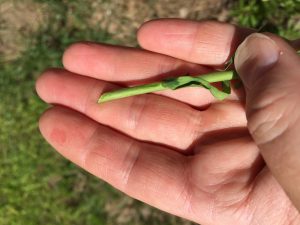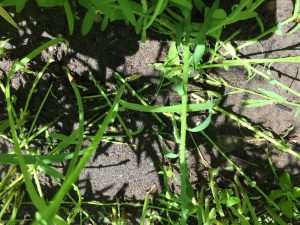It is a truth universally acknowledged that if you want to process flax, you’d better do it while the humidity is low. I am not entirely positive why this is so, but I know from experience that it is true. If you try to break or scutch your flax while it’s humid, the stalks just bend and the shives cling to the fibers for dear life. You do not hear the gratifying crackling, snapping sounds that should accompany such activities. It is arduous and futile. Well, maybe not futile, but it’s certainly a lot easier and more successful when the humidity is low.
I suspect that this is related to one of the properties of linen that make it a desirable fabric. Flax fibers are hydrophilic, meaning that they absorb water easily. I am sure someone has done research on how being damp also makes flax want to stick to itself. If you know of good resources on this, shoot me an email.
For the past several days here in western Massachusetts, we have had very, very low humidity. Well, low for Massachusetts. It’s been anywhere from 30-50% in the morning, dropping to about 18% in the afternoon. The weather has also been bright, sunny and warm. And best of all, it is April vacation! So, I have had time to sit and process flax! Everything I’m working on this week is the variety Marilyn, though I’m chipping away at bundles from various years. Continue reading “Low Humidity! April Vacation!” →












